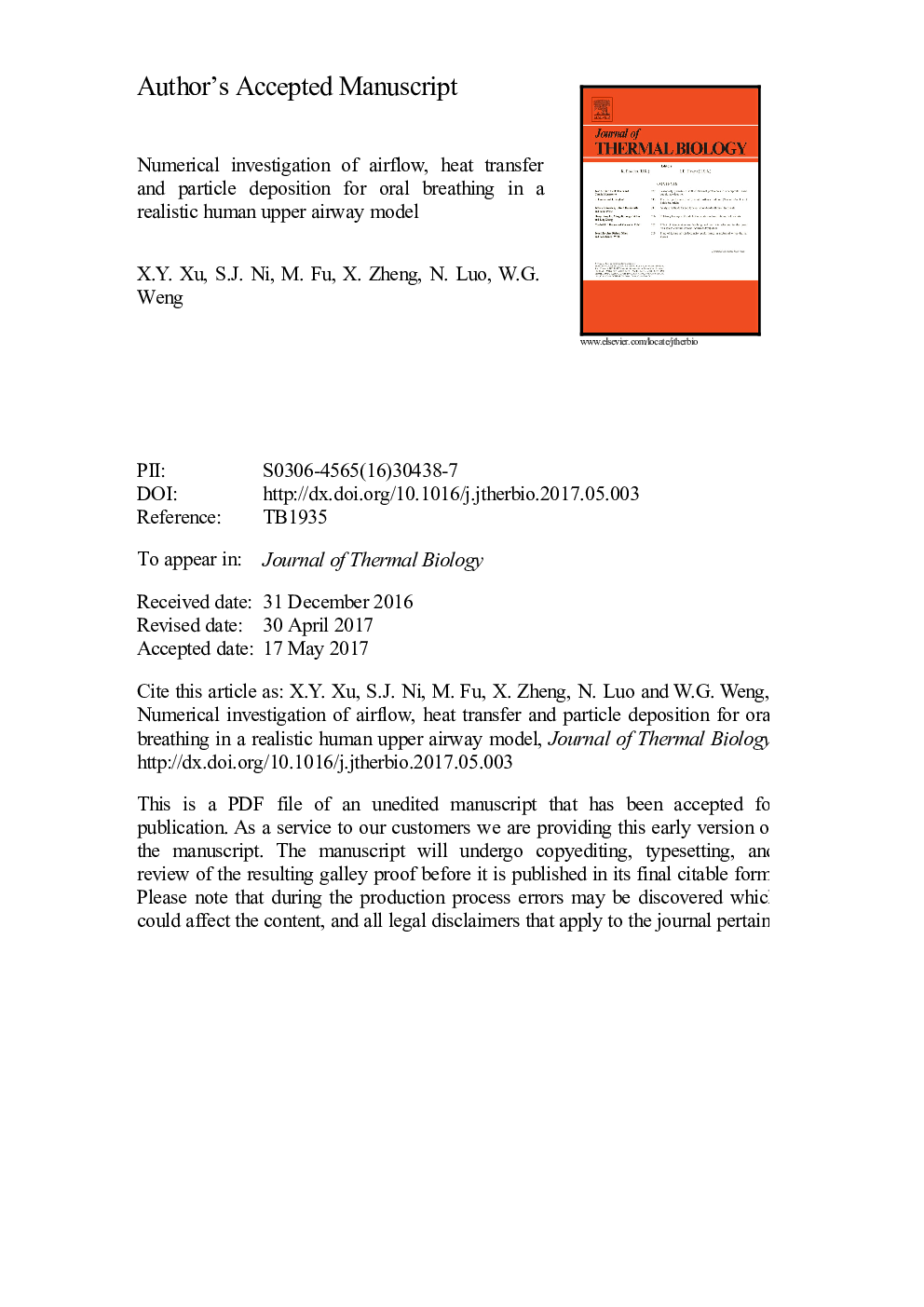| Article ID | Journal | Published Year | Pages | File Type |
|---|---|---|---|---|
| 8650190 | Journal of Thermal Biology | 2017 | 30 Pages |
Abstract
Inhalation injury from exposure to fire smoke is one of the causes of burn-related death. In this study, a realistic three-dimensional human upper airway model was built from magnetic resonance imaging (MRI) scanned images, including the nasal, oral, pharynx, larynx, trachea and part of the first generation of the tracheobronchial tree, as well as a tissue region from the pharynx to the upper bronchi. The Transition Shear Stress Transport (SST-transition) turbulence model, Pennes bioheat transfer equation, convective boundary conditions and a Lagrangian frame were applied and verified with experimental measurements to simulate the airflow fields, temperature distributions and particle deposition in the human airway model. The effects of flow rate, inhalation temperature and particle diameter were studied. It showed that the oral cavity is more likely to be affected by the inlet air conditions. The mucosa in the oral, pharynx and larynx are more likely to cause the thermal injury. The inspiration flow rate significantly influences the airflow fields, temperature distributions and particle deposition fraction interior of the human upper airway model, especially in the pharynx-larynx region. The rising flow rate, inhalation air temperature and particle diameter all contribute to boosting the total deposition fraction in the model. The heated particles with a higher temperature are more likely to be deposited in the oral cavity and the influence of the inlet temperature has a minor influence in the case of a bigger particle diameter.
Related Topics
Life Sciences
Agricultural and Biological Sciences
Agricultural and Biological Sciences (General)
Authors
X.Y. Xu, S.J. Ni, M. Fu, X. Zheng, N. Luo, W.G. Weng,
